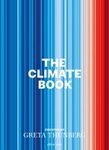![Cold Region Atmospheric and Hydrologic Studies Cold Region Atmospheric and Hydrologic Studies]()
Click to have a closer look
About this book
Contents
Customer reviews
Related titles
About this book
This set presents decade-long advances in atmospheric and hydrological research in the Mackenzie River Basin in northern Canada, which encompasses environments representative of most cold areas on Earth. Collaborative efforts by a team of about 100 scientists and engineers have yielded knowledge entirely transferable to other high latitude regions in America, Europe and Asia. Emphases are placed on the investigation of processes (including storm genesis, precipitation, moisture and energy fluxes and frost), and the improvement and application of a suite of models and remote sensing to enhance the assessment of climate variability and water resources.
This set consists of two volumes; the first volume discusses the atmospheric dynamics of the region, and the second volume details the region's hydrological processes. Together these books provide a unique synthesis of atmospheric and hydrological findings and an integrative approach across disciplines in addressing major research issues of cold regions.
Contents
Volume 1: Atmospheric Dynamics I. Introduction 1. The Mackenzie River Basin GEWEX Study and its Contributions to Cold Region Research II. Atmospheric Processess 1. A Synthesis of MAGS Atmospheric Research 2. Climatological Analysis of the Mackenzie River Basin 3. Downstream Weather Impacts Associated with Atmospheric Blocking over the Northeast Pacific 4. Cloud and Precipitation Studies over the Mackenzie Basin 5. Comparison Study and Precipitation Recycling in Four Continental Basins 6. Water Vapour Fluxes over the Canadian Prairies and the Mackenzie Basin 7. The Nature and Impacts of Thunderstorms in a Northern Climate 8. Recent Studies on the Climatology and Modelling of Blowing Snow in the Mackenzie River Basin 9. On Blowing Snow and Sublimation in the Mackenzie River Basin 10. Boundary Layers in Mountainous Terrain: Numerical Studies of Thermally Induced Slope Flows III. Large-Scale Modelling 1. The MAGS Regional Climate Modelling System: CRCM-MAGS 2. The Impact of CLASS in MAGS Monthly Ensemble Predictions 3. Integrated Modelling System: Coupling Atmospheric and Hydrological Models through a Land Surface Scheme 4. The Development of a Modified Version of ISBA and its Coupling with an Atmospheric Model IV. Water and Energy Balance Studies 1. Comparison of Solar Radiation Budgets in the Mackenzie River Basin from Satellite Observations and a Regional Climate Model 2. Wildfire Aerosol and Cloud Radiative Forcing in the Mackenzie River Basin from Satellite Observations 3. Moisture Sources for Extreme Rainfall Events over the Mackenzie River Basin 4. On Predicting Maximum Snowfall V. Conclusion Glossary and Acronyms -Volume II: Hydrologic Processes of a Cold Region I. Introduction II. Hydrologic Processes 1. MAGS Contribution to Hydrologic and Surface Process Studies 2. Climate-Lake Interactions 3. The Time Scales of Evaporation from Great Slave Lake 4. River Ice 5. Climate Impacts on Ice-jam Floods in Northern Rivers with Specific Focus on the Hydroelectric Industry in Western Canada 6. Regression and Logic-based Ice-jam Flood Forecasting 7. Modelling Maximum Active Layer Thaw in Boreal and Tundra Environments using Limited Data 8. Hydrology of the Northwestern Subarctic Canadian Shield 9. Hydrologic Connectivity of a Lake-Stream System in a Semi-arid, Precambrian Shield Environment 10. Basin Runoff Generation Processes in the Wetland-dominated Zone of Discontinuous Permafrost, Near Fort Simpson, NT III. Remote Sensing of Land Surfaces 1. Mapping of Surface 2. Albedo over Mackenzie River Basin Area from Satellite Observations 3. Estimating Snow Water Equivalent Across Northern Regions from Satellite Passive Microwave Data 4. On the Use of Satellite Passive Microwave Data for Estimating Surface Soil Wetness and for Flood Forecasting in the Mackenzie River Basin 5. Characterizing River Ice Using Satellite Synthetic Aperture Radar IV. Large-Scale Modelling 1. Re-Scaling River Flow Direction Data from Local to Continental Scales - a Summary of MAGS Research 2. Lessons Learned from Macroscale Hydrological Modelling: Applications of SLURP to Data-Sparse, Cold Regions V. Water and Energy Balance Studies 1. Assessing Water and Energy Budgets for the Mackenzie River Basin 2. Validating Surface Heat Fluxes and Soil Moisture Simulated by Two Land Surface Schemes Under Subarctic Tundra Conditions 3. Characterstics of the Moisture Flux Convergence Over the Mackenzie River Basin for the Water Years 1990-2000 4. The Influence of Lakes on the Regional Heat and Water Balance of the Central Mackenzie River Basin 5. Interannual Variability in Heat and Mass Exchange and Thermal Components of Great Slave Lake 6. The Relationship Between Monthly Precipitation and Elevation in the Alberta Foothills During the Foothills Orographic Precipitation Experiment (FOPEX) VI. Climate Variability and Change 1. Snow Cover Variability and Trends in the Mackenzie Basin, 1945-2004 2. Mackenzie Basin Snow Cover: Variability and Trends from Conventional Data, NOAA Snow Charts, Passive Microwave Remote Sensing, and Canadian Regional Climate Model Situations 3. Trends in Mackenzie River Basin Streamflows: Past, Present and Future 4. Impact of Climate Change on the Peace River Thermal Ice Regime VII. Conclusion Glossary and Acronyms
Customer Reviews



































